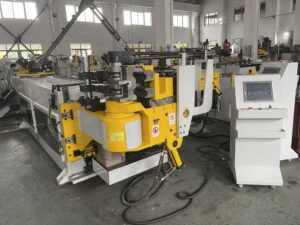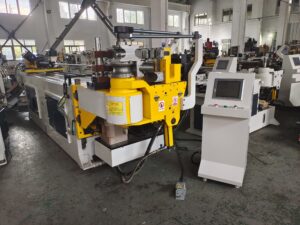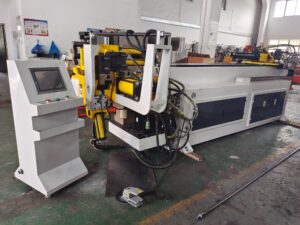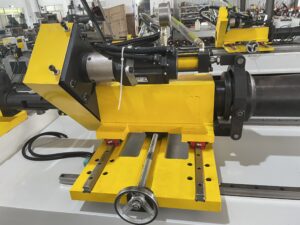How to DIY Pipe Bender: A Complete Guide for Metalworking Enthusiasts
Creating perfect bends in metal tubing can transform ordinary projects into professional-looking masterpieces. A DIY pipe bender allows you to achieve precise curves without the expense of commercial equipment.

Why Build Your Own DIY Pipe Bender?
Commercial pipe benders can cost anywhere from 0 for basic models to several thousand dollars for hydraulic systems.
Essential Components for a DIY Pipe Bender
Before beginning construction, gather these materials:
- 3/8″ or 1/2″ thick steel plate (approximately 12″ × 12″)
- Steel pipe with diameter matching your bending die
- Solid steel rod for the forming die (diameter depends on your tubing size)
- Heavy-duty hinges
- Grade 8 bolts and nuts
- Angle iron
- Welding equipment
- Cutting tools
- Measuring instruments
The quality of materials directly impacts your bender’s durability and precision. While salvaged steel can work, using new materials ensures consistent performance.
DIY Pipe Bender Designs: Choosing the Right Style
Manual Lever-Action DIY Pipe Bender
The lever-action design represents the simplest approach for DIY pipe bender projects. This configuration uses mechanical advantage through a long handle to create bending force. The longer your lever arm, the easier bending becomes, making this ideal for smaller diameter tubing up to 1″.
Hydraulic DIY Pipe Bender
For those willing to invest more effort into their DIY pipe bender, incorporating a hydraulic jack creates substantial force for bending thicker materials.
Rolling DIY Pipe Bender
Perfect for creating gradual curves rather than sharp bends, a rolling-style DIY pipe bender uses three rollers in a triangular configuration.
Step-by-Step Construction of a Basic DIY Pipe Bender
Step 1: Creating the Base Plate
- Cut your steel plate to size (approximately 12″ × 12″)
- Drill mounting holes for securing to your workbench
- Mark centerpoints for die mounting and pivot points
The base plate provides stability during bending operations. Ensuring it’s securely mounted prevents shifting that could ruin precision bends.
Step 2: Fabricating the Bending Die
- Select steel round stock with a diameter matching your desired bend radius
- Cut a groove in the die matching your pipe’s outer diameter
- Drill a center hole for mounting to the base plate
- Weld a reinforcement plate to the bottom for additional strength
The bending die quality directly affects your results. Take time to ensure smooth surfaces and precise dimensions.
Step 3: Building the Follower Arm
- Cut angle iron to approximately 18″ length
- Weld a pivot point at one end
- Create or attach a follower wheel at the opposite end
- Add reinforcement gussets to prevent flexing
Your follower arm transfers force to the pipe while maintaining contact with the bending die. Rigidity here prevents unwanted deformation during bending.
Step 4: Creating the Lever Mechanism
- Attach a sturdy pipe or solid bar (24-36″ long) to the follower arm
- Add a comfortable handle grip
- Consider adding indexing marks for common bend angles
The lever provides mechanical advantage, making bending easier. Longer levers reduce required effort but may limit workspace maneuverability.
Step 5: Assembly and Testing
- Mount the bending die securely to the base plate
- Attach the follower arm via the pivot point
- Test with scrap material before attempting project pieces
- Make adjustments as needed for smooth operation
Using Your DIY Pipe Bender Effectively
Preparing Your Materials
Before bending, ensure pipes are clean and free from defects. Mark bending points clearly, accounting for the natural spring-back that occurs with most materials. For best results, measure from the end of the pipe to the center of your bend.
Proper Bending Technique
- Position your pipe with the bend mark aligned to the center of the die
- Secure the pipe firmly in place
- Apply steady, consistent pressure with the lever
- Bend slightly beyond your desired angle to account for spring-back
- Release pressure gradually to avoid distortion
Common DIY Pipe Bender Challenges and Solutions
Problem: Pipe Flattening
Solution: Use a pipe filled with sand or a spring-type internal support to maintain shape during bending.
Problem: Inconsistent Bend Radius
Solution: Create a template or jig to ensure repeatable positioning for each bend.
Problem: Material Cracking
Solution: Heat the bending area with a torch for materials prone to cracking (approach with caution and appropriate safety equipment).
Enhancing Your DIY tube Bender
After mastering basic operation, consider these upgrades:
- Add degree markings for precise angle measurements
- Create interchangeable dies for different pipe diameters
- Install quick-release mechanisms for faster pipe positioning
- Incorporate a hydraulic system for bending thicker materials
Case Study: John’s Workshop DIY Pipe Bender
John, a custom furniture maker, needed to create consistent bends for metal chair frames but couldn’t justify the ,200 commercial bender cost. Using scrap steel and in new materials, he built a hydraulic DIY pipe bender capable of handling 1″ steel tubing.
His design incorporated a 12-ton hydraulic bottle jack mounted to a welded frame with interchangeable dies. The system included:
- A welded steel frame from 2″ square tubing
- A reinforced mounting plate for the hydraulic jack
- Three interchangeable dies for different bend radii
- A quick-release follower system for rapid adjustments
John reported: “My DIY pipe bender paid for itself on the first project—a set of six custom dining chairs requiring identical bends. The precision matches commercial equipment, and I’ve since used it for dozens of projects from furniture to garden trellises.”
After six months of regular use, John added a digital angle finder to further improve accuracy, allowing him to achieve consistency within 0.5 degrees across repeated bends.
Safety Considerations for DIY tube Bender Operation
Working with a DIY tube bender involves significant forces. Always:
- Wear appropriate eye protection and gloves
- Ensure your workpiece is securely positioned before applying force
- Keep fingers clear of pinch points between the pipe and dies
- Verify that all fasteners are tight before each use
- Work on a stable, level surface
- Never exceed the design limitations of your bender
Maintenance Tips for Your DIY Pipe Bender
To ensure longevity:
- Clean and lightly oil moving parts after each use
- Inspect welds and mounting points regularly for signs of fatigue
- Replace worn components before they fail
- Store in a dry location to prevent corrosion
- Periodically check and tighten all fasteners
For more information, please click here



